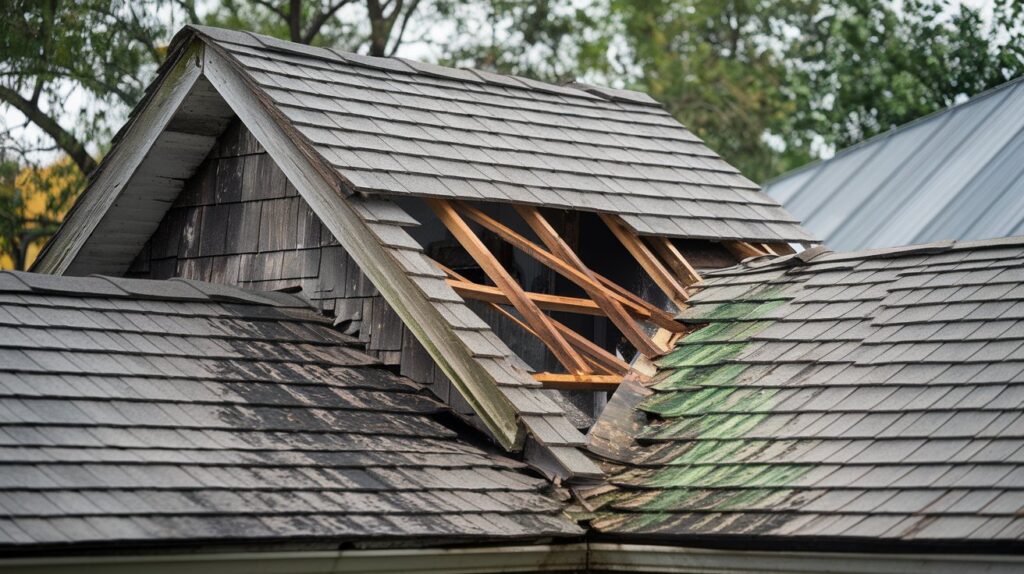Rot and mold are two of the most persistent and destructive issues that can affect a residential roof. They not only compromise the structure’s integrity but also endanger the health of those living beneath it. Moisture is the root cause, and once it seeps in, it creates the perfect breeding ground for decay and microbial growth. Roofing contractors who handle these problems must combine inspection, diagnosis, remediation, and prevention, all while ensuring the home remains protected from further damage. We will explore the methods and techniques used by residential roofing contractors to handle rot and mold effectively.
Understanding the Methods Contractors Use to Handle Roof Rot and Mold
Thorough Inspection and Moisture Detection
The first step residential roofing contractors take when dealing with rot or mold is a thorough inspection. They begin by examining the visible parts of the roof for signs such as dark spots, sagging areas, cracked shingles, and musty odors coming from the attic or ceiling. While some damage may be noticeable from the outside, the real insight often comes from examining what lies beneath the surface. Contractors use moisture meters and thermal imaging tools to detect water buildup that can’t be seen with the naked eye. These tools help pinpoint the exact location of leaks and trapped moisture, which is often the source of rot or mold.
In many cases, mold growth is hidden behind insulation or in ceiling cavities, making it essential to look beyond surface symptoms. If you’re concerned about potential roof damage, you can check here for early signs before calling in a contractor. Detecting the problem early can mean the difference between a simple fix and a complete roof replacement, so contractors put a strong emphasis on precision and detail at this stage.
Targeted Removal of Damaged Materials
Once rot or mold is identified, the next move is targeted removal. Contractors carefully remove all rotted wood, insulation, or other materials that have been compromised. For mold, this also includes removing any drywall, ceiling tiles, or roofing layers that show signs of contamination. Contractors wear protective gear during this stage because mold spores can pose respiratory risks. They typically use HEPA-filtered vacuums and sealed bags to dispose of debris in a way that prevents spores from spreading to other parts of the home. This removal process is not just about clearing out damaged sections—it’s about stopping the decay from spreading. In some cases, contractors must remove shingles and roof decking to locate the mold source, especially if it originated from a slow, undetected leak. Every piece of compromised material is documented and replaced only after the area has been thoroughly cleaned and treated to ensure a safe environment.
Application of Mold-Resistant Treatments
After removal, roofing contractors apply mold-resistant treatments to clean and disinfect the affected areas. These treatments often include fungicides or antimicrobial sprays that eliminate any remaining spores and prevent future growth. The solution is usually applied to both the exposed wood and the surrounding areas, especially in cases where mold spores may have dispersed beyond the initial damage. For rot, wood hardeners and preservative sealants are sometimes used on borderline sections that aren’t fully decayed but may have softened due to moisture. Contractors also ensure that any vents, flashing, or drainage systems contributing to moisture retention are addressed during this phase. If poor airflow or clogged gutters led to the initial damage, correcting those elements is just as important as treating the mold itself. Preventative coating and protective barriers are essential for ensuring the mold doesn’t return as soon as the weather turns humid again.
Replacement with Durable and Moisture-Resistant Materials
Repairing the damage means replacing what’s been removed with materials designed to last. Roofing contractors choose high-quality, moisture-resistant components when rebuilding sections of the roof. This could include mold-resistant plywood, treated wooden beams, and shingles with enhanced water-shedding capability. In addition to the physical replacement, underlayment materials with waterproof backing may be added to create a stronger line of defense beneath the shingles. Contractors also ensure that seams and joins are tightly sealed using adhesives and waterproof membranes to prevent future leaks.
While it may be tempting for homeowners to ask for a quick patch, contractors know that true protection comes from full, reliable replacements of compromised areas. Any shortcuts would only invite more moisture and future damage. By combining new materials with better installation techniques, roofing contractors help extend the life of the entire roof and reduce the risk of mold and rot returning.
Improved Ventilation and Long-Term Prevention Strategies
To prevent mold and rot from returning, residential roofing contractors place a strong emphasis on improving ventilation. One of the biggest contributors to mold is trapped humidity, especially in poorly ventilated attics. Contractors often install ridge vents, soffit vents, or powered attic fans to increase airflow and reduce the likelihood of moisture accumulating inside the roofing structure. In colder climates, they may recommend insulation upgrades to prevent warm indoor air from rising into the attic and condensing on the underside of the roof.
Another key prevention strategy includes cleaning and maintaining gutters to ensure proper drainage and eliminate standing water. Contractors educate homeowners about scheduling seasonal inspections, especially after heavy storms or snowfall, to catch minor leaks before they develop into major issues, such as rot. Mold and rot may be hidden enemies, but with the right proactive measures, contractors can keep them at bay long after the repairs are complete.
Dealing with rot and mold requires a detailed, structured approach that balances immediate remediation with long-term prevention. Residential roofing contractors play a crucial role in identifying moisture problems, removing contaminated materials, treating surfaces, rebuilding with quality replacements, and preventing future recurrence. Through careful attention, timely intervention, and durable materials, contractors ensure that a roof remains not only intact but also free from the hidden threats of decay. Homeowners who stay vigilant and work with roofing professionals can rest easier knowing their homes are protected from the inside out.

